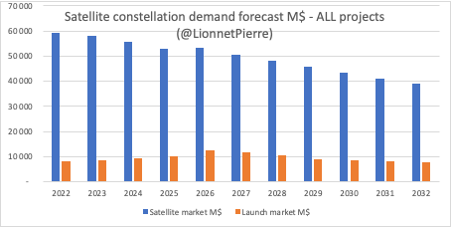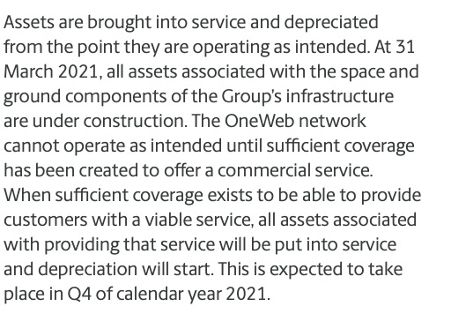
Hello Space Twitter. As 2021 s coming to a close, I am looking back at my tweet history, and thought it would be interesting to share the most significant threads I published in 2021. I have gathered them by themes in this thread of threads. 1/
About launch markets and launch costs 2/
https://twitter.com/LionnetPierre/status/1423634748866433028
https://twitter.com/LionnetPierre/status/1430497863306465286
https://twitter.com/LionnetPierre/status/1433536407625035781
https://twitter.com/LionnetPierre/status/1434127960810954757
https://twitter.com/LionnetPierre/status/1464773668714733576
https://twitter.com/LionnetPierre/status/1470220337732374534
https://twitter.com/LionnetPierre/status/1470920285960478721
About #LEO #constellations markets 3/
https://twitter.com/LionnetPierre/status/1448677218566250501
https://twitter.com/LionnetPierre/status/1448678082609664005
https://twitter.com/LionnetPierre/status/1458803552311201796
https://twitter.com/LionnetPierre/status/1473068541087731716
About the economics of the #Newspace 4/
threader.app/thread/1403310…
https://twitter.com/LionnetPierre/status/1403310850572800011
https://twitter.com/LionnetPierre/status/1428439653468749826
https://twitter.com/LionnetPierre/status/1431144646982393859
https://twitter.com/LionnetPierre/status/1435971129362030595
threader.app/thread/1403310…
About satellite markets 5/
https://twitter.com/LionnetPierre/status/1422275082307657729
https://twitter.com/LionnetPierre/status/1441463359988195330
https://twitter.com/LionnetPierre/status/1461725722255540229
About the #spaceeconomy in general 6/
linkedin.com/feed/update/ur…
https://twitter.com/LionnetPierre/status/1429754668616503305
https://twitter.com/LionnetPierre/status/1471060902090842116
linkedin.com/feed/update/ur…
About #SpaceX and #Starlink 7/
https://twitter.com/LionnetPierre/status/1435165744560582662
https://twitter.com/LionnetPierre/status/1443276350895403011
https://twitter.com/LionnetPierre/status/1447558185758433280
https://twitter.com/LionnetPierre/status/1453376295728001034
https://twitter.com/LionnetPierre/status/1465631869047869443
About @Astra $ASTR (and @Kemp) 8/
https://twitter.com/LionnetPierre/status/1456543991298727942
https://twitter.com/LionnetPierre/status/1472279570518847492
About @momentusspace $MNTS 9/
https://twitter.com/LionnetPierre/status/1472032827441135619
https://twitter.com/LionnetPierre/status/1472201708918956033
• • •
Missing some Tweet in this thread? You can try to
force a refresh


















